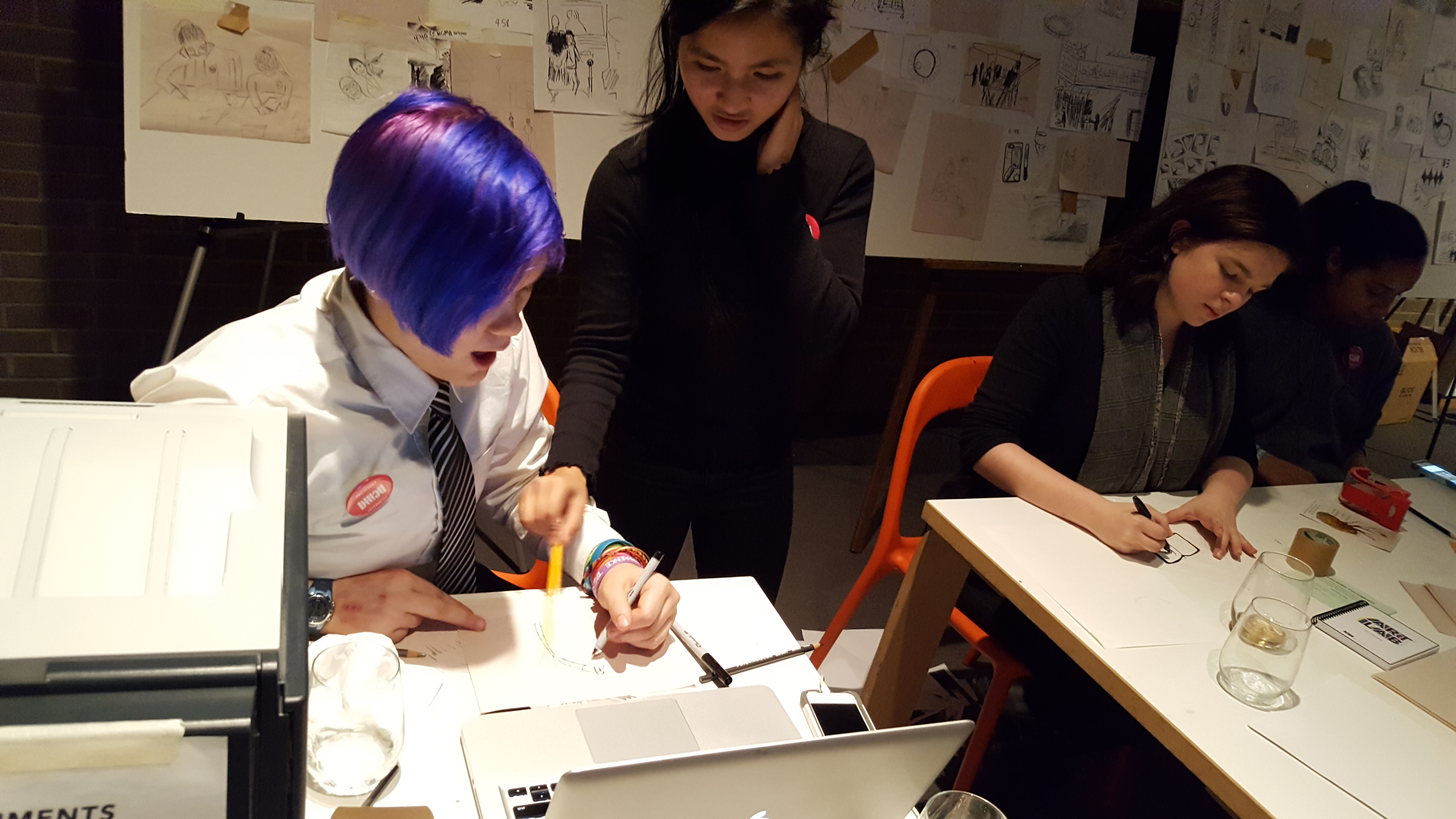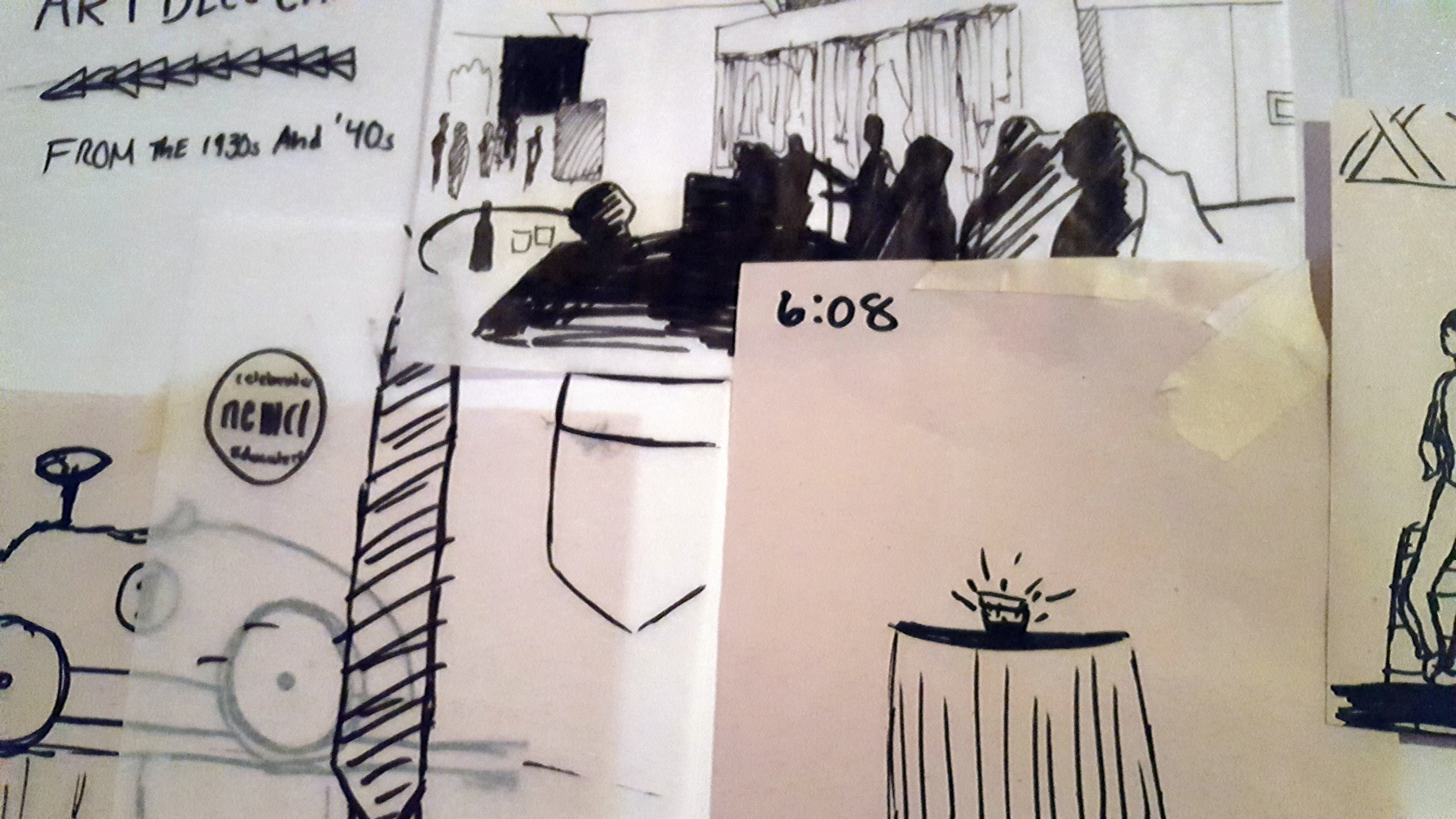This unit plan is more of an experiment in letting go of the way I typically work. Like most teachers, I tend to imagine and account for every possible dilemma and solution that a student might encounter when I develop a unit. So, in an attempt to shed the more didactic aspects of my teaching, and inspired by Laylah Ali’s John Brown project, I decided to approach this unit as a collection of open-ended ideas and resources centered around the idea of “layering experience.”
By leaving the collection open-ended, students will hopefully feel more empowered in their roles as artists, deliberately choosing which direction their explorations take. We’ll discuss ideas of layering, multiple narratives, palimpsest, ephemera, and the importance of dialog/empathy.
The big questions this unit addresses are:
- How do spaces show their past and their present? How do people show their past and their present?
- How do experiences leave a trace on spaces? On memories? On identity?
- How can an artwork represent multiple experiences simultaneously?
- How can the interaction of experience and memory create a dialog?

Anti-Eviction Mapping Project‘s Oral History Map.
Begin by sharing projects that explore different methods of layering experiences or memories within a single piece. This includes Julie Mehretu’s Minneapolis and St. Paul are East African Cities, which sought to give voice to the East African youth in the Twin Cities. For her year-long residency at the Walker Art Center, the artist asked students to document their daily lives in image and sound.
In Janet Cardiff and George Bures Miller’s A Large Slow River, the artists created audio guides for specific locations, giving instructions like “turn left here” or “go through this gateway.” Layering these instructions on top of a background of sounds like traffic, birds, and the sound of footsteps that were pre-recorded in the same location, the project creates a “virtual recorded soundscape” that mimics the reality of the space in which the guide is intended to be heard.
Likewise, the Anti-Eviction Mapping Project utilizes data-visualization, data analysis, and storytelling to collectively document the dispossession of residents in the San Francisco Bay Area after the tech boom. The project resulted in digital maps, oral histories, films, murals, and community events that documented the displacement of longtime residents.
Once you feel students understand the foundational ideas of the unit, and the types of projects undertaken by artists that layer different narratives or experiences to create a varied but cohesive whole, invite them to create their own projects that layer experiences meaningful to them.
Potential classroom explorations include:
1. Layered collaborative maps
- Select a space that all students have experiences in (cafeteria, commons, art classroom, front of school, etc.).
- Have students draw images (potentially, simple line drawings) of their experiences in that space on tracing paper.
- Layer and paste the tracing paper onto a larger image of space (such as a floor plan).
- Encourage students to redraw/emphasize lines as they see fit.
Variation: Students complete their drawings on regular paper, then project and trace those images onto a large image of space.
2. Drawing Documents, a performative variation on the ‘Layered Map’ project:
- Select (or create) an event that will involve participants posting to social media, and create a hashtag for the event.
- Set up a space at the event with tables for students to draw, and a wall or panel to post those drawings on.
- Assign tasks: Determine which students will draw, which will install the drawings on the collaborative mural, and which students will hype the activity and pass out instructions.
- As people post to the hashtag, students will draw images of those social media posts and install these drawings on the mural as well, as a timeline created in real-time at the event.
- Images will be layered, overlapped, etc.
- Event participants can join in the mural-making, using physical artifacts from ephemera to create social interaction.
3. Augmented Reality, using augmented reality applications available for smartphones like Aurasma, document personal experiences in a shared campus space:
- Students could potentially create a personal narrative of a space,
- document alternate histories through a virtual tour of a space,
- and/or collaborate, overlaying personal experiences to create a shared narrative of the space.
4. Open investigation / Student-led explorations
- Allow students the freedom to embark on open experimentations with big questions.
- Encourage questions that lead students to determine their own directions in art-making.
- Structure these investigations with the design process sequence:
Ask / Imagine / Plan / Create / Reflect / (Repeat)
For more inspiration and resources, see examples of palimpsest architecture, “Star Wars Wars: Episodes I-VI At The Same Time,” “Dan Deacon – Call Me Maybe Remix 147x,” and Ghost Signs, a collection of photographs of fading signs for long gone businesses.






